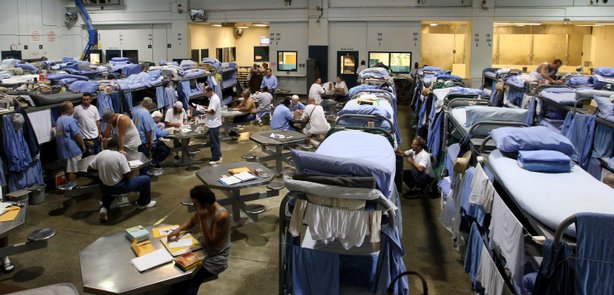
Try getting opposing politicians to agree on an issue, and you probably won’t have much success. Yet, criminal justice reform has become the unifier to bridge the divide.
President Barack Obama, at the 2015 N.A.A.C.P. Conference in Philadelphia, outlined criminal justice reform as the last great mission of his administration when he remarked to thunderous applause that “our criminal justice system isn’t as smart as it should be. It’s not keeping us as safe as it should be. It is not as fair as it should be. Mass incarceration makes our country worse off, and we need to do something about it.”
The progressive rhetoric and promises behind ambitious criminal justice reform have driven legislators nationwide to push bills that would overhaul a decades-old criminal justice infrastructure that has long been criticized as harsh, profit-driven, and simply ineffective.
In Washington, work is resuming on what representatives in Congress are touting as the most widely-supported and comprehensive overhaul of criminal justice law. This is the perceived reality in the federal government, and California wants to contribute. In 2015 alone, legislators in the State’s Senate and Assembly have proposed nearly a dozen bills that call for improvements to the many facets that encompass criminal justice, including but not limited to sentencing, parole, and post-release housing and employment.
The state of California’s criminal justice system warranted federal intervention with the Supreme Court’s 2011 decision in Plata v. Brown, in which the high court ruled that the state government had to downsize the state’s prison population after arguments that overcrowding violated the 8th Amendment’s ‘cruel and unusual punishment’ clause because of inadequate health care treatment being administered to prisoners.
Through the Plata decision, California reduced its prison population from 163,000 to 112,300, from around 197% to 135.8% of capacity, respectively. Yet, the decision was merely a short-term fix to a problem with deeper origins. Stringent conviction and sentencing laws are the real targets. Much of the fight has been reeling back policies that were enacted in the past, such as reforming the state’s Three Strikes Law, which happened in 2012. The loosening of the Three Strikes Law undoes two decades of California’s ‘tough on crime’ policy, an action that is a first step to accepting that the War on Drugs has failed.
At the executive level, Governor Jerry Brown has demonstrated his willingness to restructure the state’s criminal justice system, which he and the California state legislature helped stiffen during his first term as governor in the late 1970’s. In accordance with the Plata decision, Governor Brown and the Department of Corrections had introduced the state’s policy of ‘realignment.’ A very popular term in Sacramento, realignment promises to reduce prison populations by shifting ‘low-level’ prisoners to county jails, rather than sending them to state penitentiaries.
Though it can be praised for moving California’s criminal justice reform movement in the right direction, realignment is by no means the cure to incarceration that many hoped it would be. By merely shifting prison populations, the population of those incarcerated will have no net change, at least not in the short-term.
In a report on realignment published in September 2015 by the Public Policy Institute of California that largely deemed it effective, some of the critiques discuss realignment’s lopsided response to prison overcrowding, primarily by overly focusing on prison population control and failing to adequately address the many diverse yet interconnected dimensions of criminal justice. Realignment by its very nature does not address the causes of stiff criminal justice, and that means the policies that enable prosecutors and lawmakers to easily resort to incarceration—and long periods of it—as a fix to many offenses.
At this time, the state legislature’s focus must not merely promote realignment, but augment it. The one-dimensional scope of realignment falls short of reform advocates’ criteria, and in order for lawmakers to represent the interests of constituencies that favor reform, additional policy prescriptions are imperative.
This comes in the form of addressing grounds for incarceration, improvement of in-prison quality and treatment, and ultimately reentry of former convicted persons into working society.

Topping the list of policy goals—achieved and yet to be achieved—is Proposition 47, a measure passed in November 2014 ballot that, in essence, reclassified—and reduced—nonviolent crimes from felonies to misdemeanors. Prop 47 was a godsend for reform advocates frustrated by the brutality and failures of the War on Drugs; while sentencing procedures for most forms of theft were softened, the most prominent change was that which addressed the use of illegal drugs, often the point of most contention in the dialogue concerning prison reform .
Across the state and the nation, Prop 47 gained traction, support, and financing, often by groups and figures that are often considered political and ideological foils. The American Civil Liberties Union alone injected $3.5 million, followed by endorsements from national figures ranging from former Newt Gingrich (R) to Michelle Alexander, the influential civil rights advocate and writer.
A bipartisan consensus backing of criminal justice reform begs questions as to what may be the motivations on both sides of spectrum. “Tough on crime” was the rallying call of both the liberal and conservative political establishments for much of the latter half of the 20th century, yet suddenly it has become demonized and rejected by both wings. For liberals, the push to reform validates the belief that mass incarceration has done little to address crime. Recidivism continues to be an issue because according to the same report by the Public Policy Institute of California, 40% of released felons were sent to back to prison after a year. For conservatives, mass incarceration has simply become too costly to sustain. If federal and state spending on prisons can be cut, then, politically, that is the route to follow.
Prop 47’s success, the national attention it has garnered, and the reforms it implemented all serve as proof of California’s position as a leader in policy—as California goes, so shall the country. If the theory of federalism proves true, California is a laboratory for testing criminal justice reform, and if it succeeds here, perhaps other states will implement similar policies.
What’s next? Surely the dialogue will not end with realignment; with overcrowding in prisons across the country and in California still an alarming issue, activists and advocates are demanding more action by legislatures. For all the good that has been promised, how much of it can be delivered is the matter of genuine concern.
Featured image source: Justin Sullivan / Getty Images





Be First to Comment